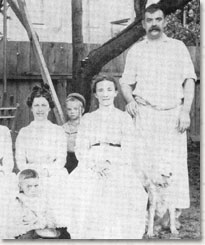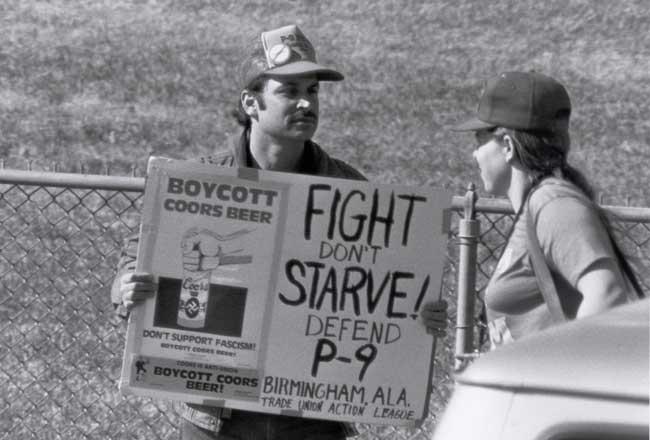
This Day in Labor History: April 18, 1912. Coal miners along Paint Creek and Cabin Creek in West Virginia went on strike to protest the terrible conditions of their lives. Let's talk about the West Virginia Mine War of 1912! 

The isolation and geography of West Virginia allowed coal companies to dominate their workers like no other employer in the nation, except for arguably landowners with southern black sharecroppers.
Coal mines took little capital to open and so small operators, followed by larger companies with connections to railroads and steel mills, came in, dug mines, and then lorded over their impoverished workers in company towns like medieval fiefdoms.
Union organizers and supporters were routinely murdered or evicted from towns. No unions here.
The United Mine Workers of America, founded in 1890, was a struggling union facing a very difficult industry to organize. Because coal was common across much of America, it required the union to organize all of coal if it could successfully organize any of it.
It couldn’t organize Illinois and Pennsylvania without also organizing Kentucky and West Virginia, because in an industry where wages were rock bottom and conditions murderously awful, any gains made would be immediately undermined.
It’s no wonder the UMWA was largely a touch-and-go operation until the 1930s, including nearly being killed off entirely in the 1920s.
Still, mine workers did want better lives. Some were brave enough to join the union, many more wanted to but were too scared. By early 1912, the UMWA had made some real progress at Paint Creek. Some even had union contracts.
In March, they demanded new contracts with wage increases and automatic union dues deduction. The mine owners responded by withdrawing recognition of the union. The miners would not take this lying down.
On April 18, not only the Paint Creek miners, but 7,500 on Cabin Creek and in surrounding counties went on strike. The West Virginia Mine War of 1912 was on.
Everybody was armed in this struggle. The miners had their hunting rifles and were not afraid to use them. The mine owners frequently used strikebreaking agencies, especially the loathsome Baldwin-Felts, as hired thugs who would murder miners without blinking an eye.
Up to 300 Baldwin-Felts agents poured into West Virginia. The mine owners also used their control over the miners to their advantage.
Again, these were effectively medieval fiefdoms. What limited infrastructure there was had often been built by the companies, not the state or counties.
So not only were striking miners thrown out of their homes, they were banned from using the roads built by the companies or tapping into the water lines they had also built.
Denying strikers water is about as bad as it gets except for killing them, which was a common fate throughout the spring and summer as the Baldwin-Felts thugs ran amok.
The union had its aces as well. Mother Jones, beloved by the miners, showed up to organize and rally them. Organizers with the Socialist Party were also involved. There were pitched battles between the miners and the thugs at such places as Mucklow, Dry Branch, and Eskdale.
In September, Governor William Glasscock, a bought man of the coal companies, declared martial law and sent 1,200 state troops into the mine district to confiscate the weapons of the miners, some of which you can see in the image that introduces this thread.
Mother Jones was arrested, as were about 200 miners. That said, this strike was not a total loss. The state did want to end the violence and even the declaration of martial law had not done so. So there was a compromise in April 1913, after a year of strikes and violence.
The new governor, Henry Hatfield, wanted to end this by keeping the most militant union members in jail awhile longer while encouraging both sides to deal.
The union gave up most of its new demands in return for protection from union members being fired, the maintenance of a 9-hour day, and some minor movement on wages. The companies agreed.
As part of all this, Hatfield had the National Guard shut down the Socialist Party newspapers in the state. Freedom of the press was not going to happen in West Virginia.
This was only the first round of the mine wars. The workers were not happy with the settlement, feeling that the union had sold them down the river.
They began electing new and more militant local leadership that would stand up to the compromising international leadership.
After World War I, the anger and bitterness engendered in 1912 and 1913 would come back with a vengeance.
The companies looked to eliminate the UMWA from the state entirely in the early 1920s, leading to the shootout at Matewan and then the Battle of Blair Mountain, the largest domestic insurrection in this nation since the Civil War.
In the aftermath, the UMWA lost everything in the state and would not gain it back until the Great Depression. The union’s new president, the autocrat John L. Lewis, proceeded to evict the militant West Virginia union leadership from the union entirely.
Further reading:
James Green, The Devil Is Here In These Hills: West Virginia’s Coal Miners and Their Battle for Freedom.
Elliott Gorn’s Mother Jones: The Most Dangerous Woman in America.
James Green, The Devil Is Here In These Hills: West Virginia’s Coal Miners and Their Battle for Freedom.
Elliott Gorn’s Mother Jones: The Most Dangerous Woman in America.
Back tomorrow to discuss the 1911 Grand Rapids furniture strike, a great window into how religion shapes what class consciousness we might or might not have.
• • •
Missing some Tweet in this thread? You can try to
force a refresh








